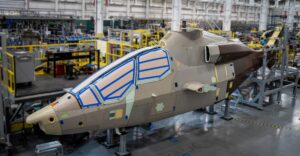
AMARILLO & FORT WORTH, Texas — Bell’s [TXT] build of the 360 Invictus helicopter for the Army’s Future Attack Reconnaissance Aircraft (FARA) competitive prototyping effort is over 80 percent complete, while first flight has been pushed to early 2023 due to a delay in delivery of the General Electric Aviation [GE]-built Improved Turbine Engine Program (ITEP) engine. During a visit to Bell’s manufacturing facility in Amarillo, Texas where the 360 Invictus is being built, company officials told reporters the build…

 By
By 











